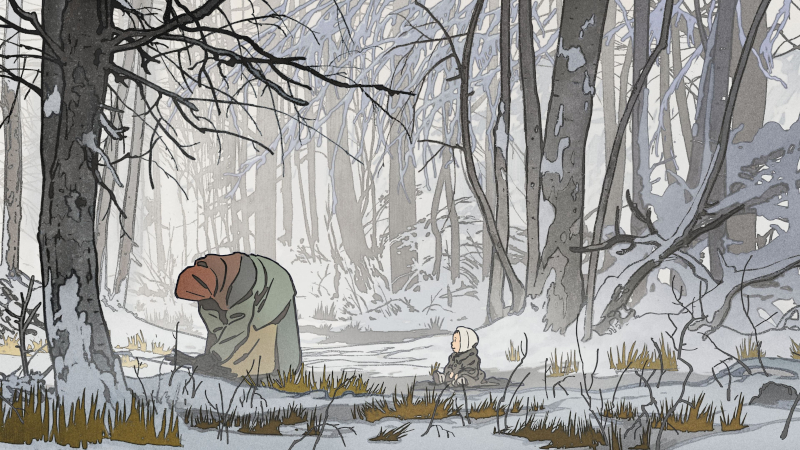Director – Michel Hazanavicius – 2024 – France – Cert. 12a – 81m
*****
In Winter in a forest, a poor woodcutter’s wife rescues an abandoned baby thrown from a passing train and, despite her husband’s misgivings, raises the girl as her own – out in UK and Ireland cinemas on Friday, April 4th
Once upon a time… In the woods through which many trains pass… In a war… Yes, that war… In Winter, when everything is under snow… The wife (voice: Dominique Blanc from La Reine Margot, Patrice Chéreau, 1994; Indochine, Régis Wargnier, 1992) of a poor woodcutter, unable to have children, is outside and prays to the Gods of the Trains. Whether they hear her and look upon her kindly, or whether they even exist, it’s impossible to say. Following her prayer, however, she hears the sound of a baby crying. How did the baby get there? Well, unbeknownst to the woman, a man in a goods wagon threw it out of a passing train. She locates the baby girl, takes it home, feeds it. It’s the child she never had.
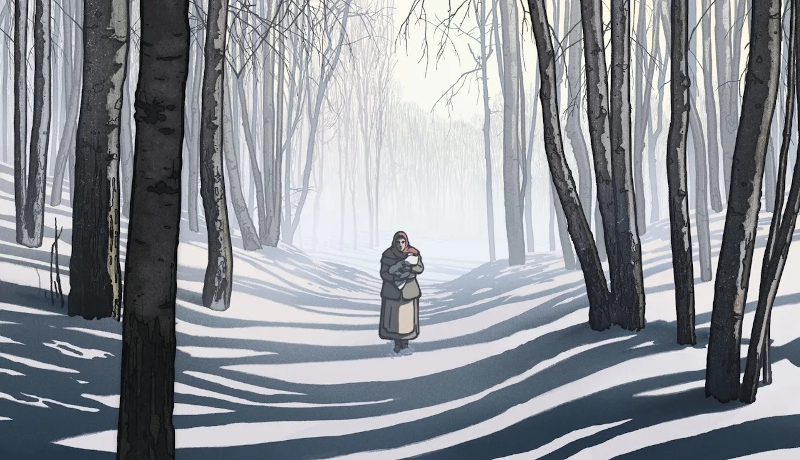
Her husband, the woodcutter (voice: Grégory Gadebois from Everything Went Fine, François Ozon, 2021; Redoubtable, Michel Hazanavicius, 2017), on returning home, discovers the baby and is furious. It’s an extra mouth to feed when they can’t afford it. Worse, it’s one of the Heartless, and if his fellow woodcutters knew his wife were sheltering it, there’d be trouble.
But for the present, the wife responds to her husband’s demands that she get rid of the Heartless baby by taking his hand and making it feel the child’s beating heart. Impressing upon him the point that the so-called Heartless has a heart. The husband is none too happy about this, but since his wife has threatened that if the baby leaves, she leaves too, he grudgingly puts up with it. After a year or two, his heart has melted, and he proves to be a good father to the little girl. However, he has told no-one else about her.
Indeed, much later on in the narrative, the other local woodcutters get wind of the couple’s child, and visit the woodcutter’s humble home to have it out with him. Violence ensues, people die. The wife’s faith in the Gods of the Trains is severely shaken. She leaves, with the child, and seeks help from another man (voice: Denis Podalydès from Hidden (Caché), Michael Haneke, 2005), half of whose face is missing as a result of an earlier war.

Intermittently, while all this is going on, flashbacks tell the story of the man who threw the baby off the train. How he and his wife and baby and child boarded the train as instructed by the authorities, and were herded into covered wagons with many others for their journey by train, which takes them through the woods, to the end of the line where there are towers and buildings and chimneys belching bloody smoke. And, everywhere, Winter. Two people marked with the Star of David sling many, many bodies into pits.
All this will be ingrained upon the man who threw the baby off the train. And yet, somehow, he will survive this living nightmare, this war, and become a paediatrician, famed for his work with children and much in demand as a speaker at medical conferences. And twenty years on, he will find himself at an urban rail terminal…
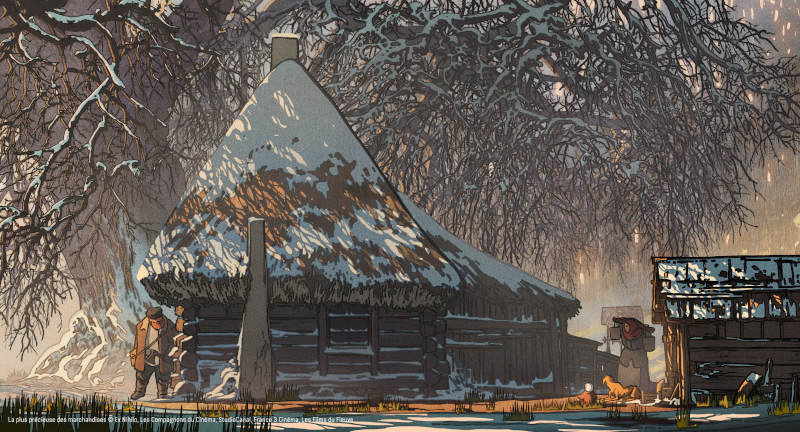
This is very different from other feature films about the Holocaust. For one thing, it is essentially a fairy tale opening with the words Once Upon A Time… If you think that means it’s sugar-coated children’s entertainment, then you’ve forgotten the savagery of these stories as originally recorded by the likes of the Brothers Grimm. That said, The Most Precious of Cargoes is an original story, which began life as a novel by Jean-Claude Grumberg, a playwright and novelist who director Hazanavicius has known all his life, since Grumberg and Hazanavicius’ parents have been best friends since their teenage years.
Hazanavicius’ own filmography (Redoubtable, 2017; The Artist, 2011; OSS 117: Cairo, Nest Of Spies, 2006) consists entirely of live action movies prior to the current offering: this is his first film to be made in animation. Although he drew and designed all the characters himself, he claims he did so without any knowledge of what would or would not work in animation.
And although there is a long history of illustration directly furnishing the drawn animation medium with imagery, that isn’t really what’s happening here. (This writer initially assumed the source novel was a graphic novel, complete with its own imagery, whereas it turns out to be a traditional novel wherein the reader’s imagination supplies the visuals).
The marriage of a director familiar with and skilled in live action storytelling working within drawn animation here turns out to be something of an asset. Hazanavicius paces his film based on what he knows would work in live action, yet the fact that the audience is watching moving drawings gives it a very specific, otherworldly, fairy tale feel perfectly suited to a tale beginning, “Once Upon a Time…” Thick, black lines around the characters give them a feeling quite different from most other drawn animated fare. And the feeling that the viewer is being told a story, that all this is artifice, is more prominent than if the piece had been made as live action.
Then, there’s a whole issue about whether this is really a film about the Holocaust. It clearly isn’t a documentary like German Concentration Camps Factual Survey (Sidney Bernstein, abandoned 1946, restored 2014) that confronts you with the horrors of that atrocity head on by showing you what the cameras saw when Allied cameramen first unwittingly entered the death camps. Nor is it a drama like Schindler’s List (Steven Spielberg, 1993) which takes you inside a concentration camp. It isn’t even an animated drama like Where is Ann Frank (Ari Folman, 2021) which explores a character who later met their end in a death camp.
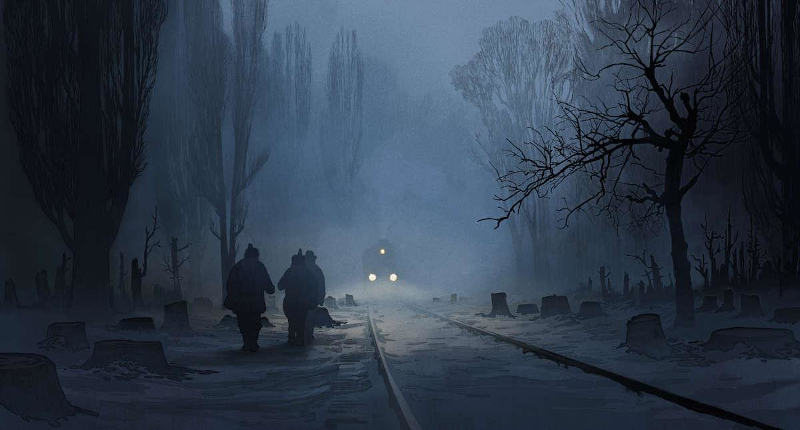
Instead, it plays out largely in a Wintry, wooded, rural Poland, a backdrop where one can imagine a fairy tale taking place, and as it were skirts around the Holocaust in the strange way that it does such that it deeply touches the main characters’ lives. i.e. trains passing through the forest without the locals really knowing where they come from, where they are headed, and what their purpose might be in the larger scheme of things, i.e. Hitler’s Final Solution. Which is not to say that the community of woodcutters aren’t complicity exactly – most of them, at least what we see of them, i.e. the men, are prejudiced against the group they refer to as The Heartless, and seem to know where a baby Heartless would have come from (i.e. the train).
The woodcutter at the centre of the story is complicit in this too, since he doesn’t want to upset the status quo and possibly lose his livelihood by speaking out against the generally-held, anti-Heartless prejudice. Yet when his wife appears with the Heartless baby, he is forced to choose between the baby and his wife on the one side and his colleagues on the other, a choice which he puts off as long as he can by keeping the child’s presence in his home a secret.
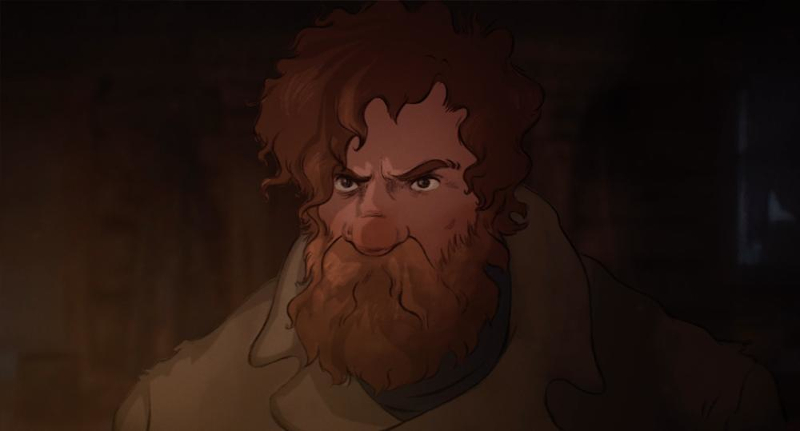
The central character here, though, is not the poor woodcutter, but his wife, who appears to live an isolated existence. We never see her with any of the other woodcutters’ wives – in fact, we never see those other wives at all, so presumably thy live similarly isolated existences to her. She is aware of the woods, and the trains passing through, but perhaps her isolation prevents her knowing anything beyond that. When she finds the abandoned baby, she is not caring for it because it’s a member of the Heartless, but simply because it’s an abandoned baby requiring parenting.
This means that while the film skirts around the subject of the Holocaust, if you know what went on, you can constantly feel the atrocity taking place beyond the confines of the screen. As a reminder, the audience is shown (although the woodcutting community is never shown) the train terminus, the towers, the chimneys belching smoke.
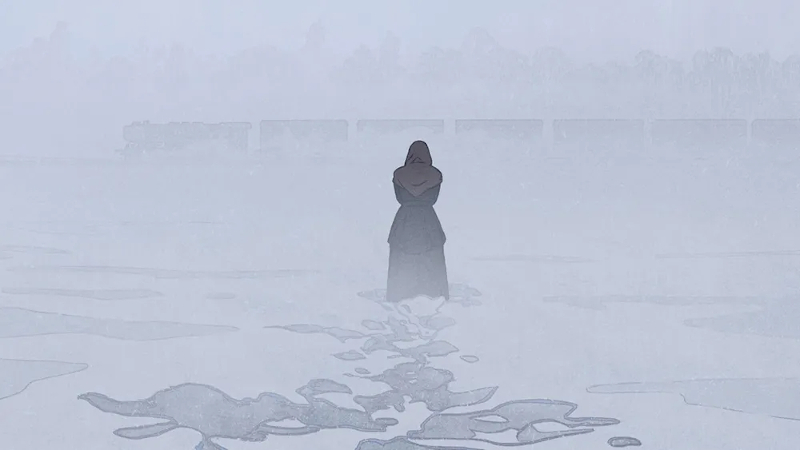
The novel is related by a narrator who insists that nothing like this ever took place; a bizarre narrative which indirectly relates the horrors of the Holocaust, then denies that any such atrocity ever took place. It’s just a fairy story. Assuming one is not a holocaust denier, what occurred historically is so appalling that no-one wants to admit it actually took place, although of course, it did, and one must admit the fact. Those who perpetrated it, like the commandant and his family in The Zone of Interest (Jonathan Glazer, 2023), somehow shut out of their minds the truth that those upon whom this terrible thing was being perpetrated were, in reality, their fellow human beings. A similar shutting out of humanity must occur in Israel’s massed killing and mistreatment of people currently living in Gaza.
Hazanavicius’ animated adaptation ends with an off-screen narrator (Jean-Louis Trintignant in his final film) who alongside asserting that the current story is a fiction, reminds us that the seemingly unbelievable events portrayed in that fiction are grounded in historical truth which we forget or deny at our peril. Somehow, this voiceover seems unnecessary: although the film’s portrayal of the Holocaust is mostly indirect rather than direct, as the narrative skirts its way around the atrocity, you can’t really escape from it whilst watching. If you know what’s going on, the fact that you can’t see it doesn’t lessen the appalling nature of the atrocity, or the emotional impact of the tale.
The Most Precious of Cargoes is out in cinemas in the UK and Ireland on Friday, April 4th. In French with English subtitles.
Trailer:
